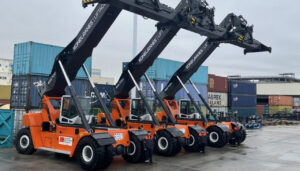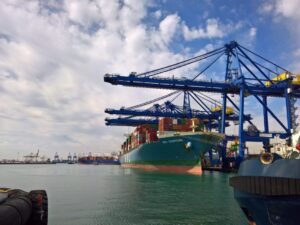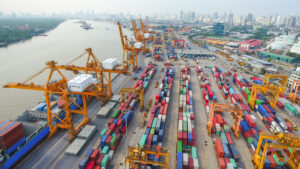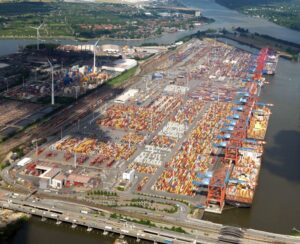APM Terminals Pipavav has developed an online version of Form 13, a gate-in permit issued by terminals, to save close to 3 million kilometres of road trips annually.
The terminal on the West Coast of India will also reduce its carbon emissions each year by using the paperless form, which is a document that each of the 500 trucks need for taking containers through the terminal gates every day.
APM Terminals expects the digitalization to save customers fuel costs, processing time and lives, as fatal road traffic accidents are likely to fall due to fewer motorbike couriers delivering documents.
Previously at APM Terminals Pipavav, shipping lines would collect multiple documents to issue completed Form 13 for each container.
The truck arrived at the pre-gate waiting area and handed over the documents required to obtain Form 13 to Gate In the container.
A customs agent then took the documents on a 14-kilometre trip to the shipping line’s office to submit the documentation, and wait for a manual Form 13.
Once a trucker had a Form 13, a pre-gate clerk would enter the details in the terminal operating system (TOS) so the truck could enter the facility.
Learn more about another APM Terminals facility by reading the 'Cartagena Container Terminal: A ‘Tailor-made’ Home Terminal' technical paper by Enrique Piqueras, Managing Director, APM Terminals Cartagena
Under the new system, a customs agent can upload the required documentation digitally onto the e-Form 13 platform.
A shipping line’s approval of the document will then trigger an approval transaction number, which will update the TOS with the necessary information.
This will allow the customs agent to send the approval transaction number to the driver via text message to allow the truck to pass through the gate.
In its announcement about the implementation, APM Terminals stated: “The development partner for the new system was carefully selected based on their previous experience developing similar platforms, to ensure that the transition went as smoothly as possible.
“Training sessions were run to ensure that all of those impacted by the change, fully understood the process and implications.
“Through these training sessions, the terminal has also strengthened customer engagement.”









